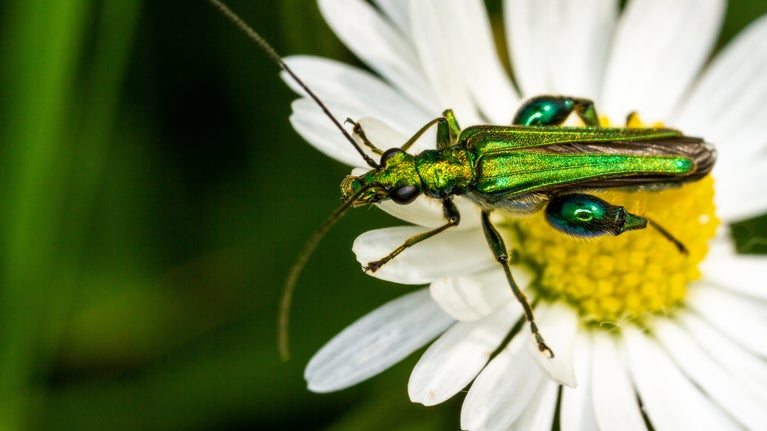
Get closer to wildlife
Discover tips for spotting mammals, birds and insects each season and learn about the range of wildlife at the places we look after.

Barn owls are instantly recognisable from their heart-shaped faces and distinctive feathers. To help these birds thrive, our rangers monitor the owls throughout their lives in order to understand more about their preferred habitat and lifestyle. Learn where these birds prefer to hunt and nest, and the kinds of habitats they use at the places in our care.
Barn owls prey on small mammals. Their big eyes are great at seeing in low light and they have specialist hearing that helps them to accurately pinpoint their prey.
When fully grown, they have a wingspan of around 110cm and weigh 470–570g. Their wings are very long for their body, which helps them to fly without making any sound.
They fly silently and slowly and can appear to hover over the small rodents they hunt. Once they see something, they will give a brief beat of their wings and then drop feet-first, thrusting their talons into the vegetation.
Barn owls are famous for flying at night and can often be seen at dusk. But you might catch one flying in the daytime, particularly when they have young to feed. They don’t store much fat so they need to feed quite regularly to avoid going hungry.

Barn owls hatch four chicks on average, but only two or three usually fledge. By measuring their wingspan and looking at the development of their feathers, experts can determine the age of an owl chick.
Most barn owls are ringed as nestlings, when they are between three to seven weeks old. Ringing helps to monitor the population and movement of birds, as well as their lifespan. It also means that there’s more chance of recovering an owl if it’s sick or injured.
Barn owls are mostly found in open countryside and farmland, but may also be seen on the fringes of urban areas. Some older buildings (especially old barns) have owl windows, small openings high in the gable end, which give access to the loft space – as owls were once a popular form of pest control.
Barn owls tend to favour agricultural buildings provided there is suitable surrounding habitat for small mammals, as well as little disturbance. Rangers have installed nesting boxes used successfully by barn owls, particularly in modern barns where there are few voids.
It’s vital we protect landscapes, to help conserve one of our most beautiful birds alongside all the other animals that call the countryside home.

‘Catching a glimpse of a barn owl never fails to lift your spirits – even on the coldest and darkest of winter days.’
These are just a few of the places in our care that are home to barn owls – they all give us more insight into the places barn owls choose to nest and hunt.
The parkland at Blickling has everything a barn owl needs – its grasslands are teeming with small mammals for them to eat; traditional buildings and hundreds of old trees full of holes create plenty of places for them to build their nests.
You can see barn owls hunting in the woods – up by the Pyramid Mausoleum is a good spot – where there are trees for nesting and good hunting grounds.
Barn owls nest in several of the old military buildings on Orford Ness. As dusk falls their ghostly, silent flight low over the grazing marsh perfectly matches the twilight mood. In spring they are often visible hunting during daylight hours, looking for food for their young.
You might spot a barn owl at dusk along the coast of Penbryn Beach. Their distinctive call, more like a screech, has been heard here as the sun sets.
Rangers have been putting up barn owl boxes all over the estate as part of a project with the Gloucestershire Wildlife Trust. They monitor the boxes and ring the chicks each year to get information about occupancy and breeding success.
The data they gather helps identify areas on the estate that would benefit from more nest boxes and where foraging habitats might be improved.
Barn owls nest in and around the buildings at Stowe and can often be seen at dusk when they’re leaving their roost to hunt. They hunt over rough grass across the parkland, where they can find mice and voles.

Discover tips for spotting mammals, birds and insects each season and learn about the range of wildlife at the places we look after.
Read these tips to make the most out of no. 40 of our ‘50 things to do before you’re 11¾’, go on a nature walk at night.

The places we look after are home to every kind of bat that lives in the UK. Use our handy guide to identify different species and find out where to spot them.

Biodiversity is the variety and breadth of life on Earth and it’s diminishing at an alarming rate; experts suggest we’re in the sixth mass extinction. We can all do our bit to protect biodiversity near us.
